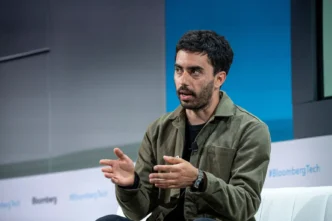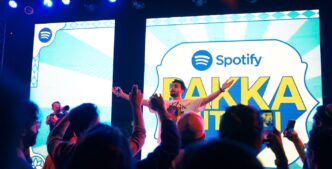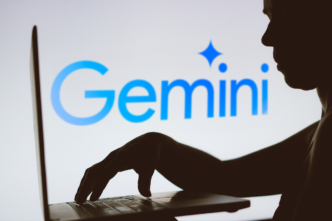Since ChatGPT’s debut more than two years ago, we’ve seen a massive shift in how software is built and delivered. With large language models (LLMs) powering development, it’s never been easier to launch AI-powered tools. Developers are now creating functional apps with just a few prompts and a slick user interface.
From AI-enhanced coding platforms like Cursor, Bolt, and Lovable, to the rising trend of “vibe coding,” the development process is faster, smoother, and more accessible. But in today’s crowded tech landscape, building something impressive isn’t the hard part.
The challenge is being seen.
The Real Bottleneck? Getting Attention
AI is supercharging development. Apps get built in hours, bugs are caught early, and full platforms are generated in days. But that speed comes with a cost: a saturated market. Now, every developer can launch. The real question is—can anyone find your product?
Tools like GitHub Copilot and no-code platforms have made shipping easier, but distribution hasn’t kept up. The internet has a fixed amount of attention to offer. Those who win aren’t always the best builders—they’re the best at grabbing attention.
To cut through the noise, you need compelling messaging, smart SEO, viral content, and powerful networks. Because while AI makes building easy, it also makes standing out much harder.
More Apps, Less Visibility
Just scroll through X (formerly Twitter). It’s flooded with AI demos. App stores are overflowing. Every day, dozens of similar tools launch with near-identical features. But the few that break through aren’t necessarily better—they’re just louder, faster, and more strategic with distribution.
Founders aren’t just launching products anymore. They’re fighting for space in social feeds, inboxes, and minds.
The Tale of Two Founders: Product vs. Promotion
Imagine two computer science grads. One spends half a year crafting a flawless AI tool for generating legal documents. The other launches a rough chatbot for small businesses to track invoices—but she promotes it daily on social media, runs TikTok ads, joins Slack communities, and sends out cold emails nonstop.
Guess who wins? The one with the audience. Because in this market, a decent product with excellent distribution beats a perfect product no one knows about.
Great Product, No Distribution? You Lose
We’ve seen it time and time again. A founder ships an AI-powered meal planner that goes viral—for a day. But there’s no follow-up, no retention strategy, and no user growth.
Meanwhile, a less-polished version backed by clever marketing grows quietly to 50,000 users.
It’s not about who builds better. It’s about who gets seen first—and sticks.
The Sam Altman Rule: Scale Over Sophistication
A founder builds a cutting-edge AI diagnostic tool. It’s accurate, validated, and lightning-fast. But without distribution, it sits idle. Another team launches a simpler version—but they strike a deal with a healthcare network, putting their tool directly in clinics.
Guess who scales? The team with the distribution.
As OpenAI’s Sam Altman put it, he’d take a billion-user product over the most advanced model any day. Why? Because users drive revenue, data, and stickiness. Advanced tech without reach is just potential, not power.
Salesforce: The Distribution Fortress
One startup tried to replace Salesforce with a smoother CRM and better integrations. On paper, they nailed it. But in the real world? Customers stayed with Salesforce.
Why? Distribution.
Salesforce is deeply embedded into business workflows. It has partnerships, integrations, and reps in every enterprise. Replacing the tech isn’t enough—you’d have to replace the entire ecosystem.
Distribution builds moats you can’t out-code.
Why Founders Need to Think Like Sellers
Let’s say two co-founders build a B2B SaaS tool. One focuses on perfecting features and squashing bugs. The other spends every day doing outreach, posting demos, replying to comments, and hosting webinars.
Who gets traction first? The one talking to users.
In the 2010s, product-focused builders led the way. In the 2020s? Hustlers win. Distribution is the edge now. It’s not just about building—it’s about getting seen, heard, and adopted.
AI Is Changing Search—Not Replacing Distribution
A health app recently saw most of its new signups coming from ChatGPT, not Google ads.
How? Their documentation was written in a way that LLMs could understand and recommend it. They optimized for AI visibility—not just SEO.
Distribution hasn’t disappeared. It’s evolving.
- SEO is shifting toward LLM compatibility
- User discovery is happening on Reddit, TikTok, and ChatGPT
- Stripe is already formatting its docs for LLMs
Modern distribution means meeting users where they already are—especially inside AI systems.
What Today’s Founders Must Know
Here’s the blunt truth: AI has made it easy to build. But standing out? That’s never been harder.
You can build an AI app in a weekend. But by the time you launch it, 15 more will too. By year-end, you’ll be one of 100,000. Everyone wants users. Everyone is screaming into the void.
Getting a better model won’t save you. Learning distribution will.
How to Win the Distribution Game
Here’s what’s working right now:
- Focus on a Niche
Don’t build for everyone. Build for someone specific—like Shopify store owners with low cart conversions. Niche down, find their communities, and speak their language. - Leverage Existing Platforms
You don’t have to start from zero. Ride the rails of places like app marketplaces, browser extensions, and Slack integrations. Borrow attention before trying to build it. - Master the Algorithm
Google, X, TikTok, the App Store—all rely on algorithms. Learn what they reward. Optimize headlines, test content, and let AI help you find what sticks. - Build In Word of Mouth
Engineer virality. Dropbox gave users extra storage for referrals—and grew like wildfire. Make sharing rewarding, and make it easy. - Do the Unscalable
Reach out personally. Cold DMs, 1-on-1 onboarding, small webinars. These tactics don’t scale, but they build real relationships that drive early traction.
Final Takeaway: Visibility Is the New Moat
A founder once said, “I built something great—but no one came.” When asked how many people he told, he replied: “Maybe 12.”
That’s the crux. You can build something powerful, but without distribution, it’s invisible. In today’s AI-saturated world, building isn’t enough. To win, founders must learn how to get seen.













